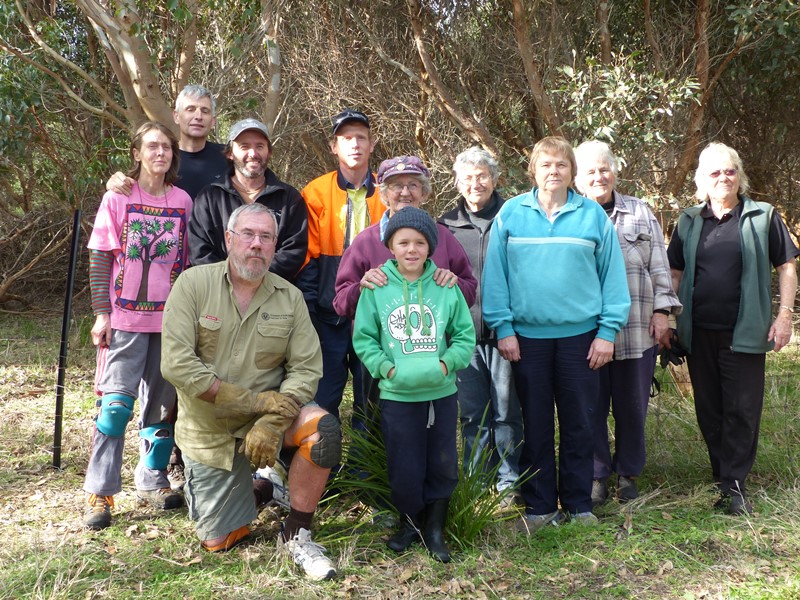Swamp Gums and native grasses – the focus of a working bee at Piccaninnie Ponds Conservation Park
The first of many working bees occurred within the Ramsar-listed Piccaninnie Ponds Conservation Park recently, whereby the Mt Gambier Friends of Parks group helped to create additional habitat through our Restoring Under-represented Ecological Communities project. This region-wide project (being run by Nature Glenelg Trust on behalf of Natural Resources South East) is focussing on Swamp Gum Woodlands to protect and enhance sites with weed control and revegetation over the next four years.
On Saturday June 13th, grasses and lilies were planted beneath existing Swamp Gum trees growing around the edges of ‘Pick Swamp’. Fifteen participants came out, on what was a sunny winter day, to plant 220 tubestock provided by Mimosa Farm Trees nursery.
A fence was also erected to keep the wallabies and kangaroos out for the first year to allow the plants to establish and become mature enough to handle browsing.
The treed area with Swamp Gums (Eucalyptus ovata) was planted some 8 years ago and now has a dense canopy, so to open the site up a little we cut down a few trees to lay them on the ground and provide additional habitat features like logs and leaf litter which will benefit reptiles, frogs, insects and birds.
This new habitat compliments the wetland restoration efforts directly adjacent, which boasts permanent water and breeding pairs of Brolga, and Australasian Bittern.
The Swamp Gums, now >6m tall have suppressed most of the pasture grasses and other weeds which allowed easy planting and site preparation to plant natives and help bring a natural ground layer back.
We set up a photopoint to help record changes at the site overtime and the laying of roofing tiles in subsequent visits will facilitate the surveying for reptiles which will hopefully return to the site once the grasses mature.
This project is supported by Natural Resources South East and the Australian Government.




